| Listing 1 - 10 of 17 | << page >> |
Sort by
|
Dissertation
ISBN: 9064640327 9789064640322 Year: 1999 Publisher: Assen Van Gorcum
Abstract | Keywords | Export | Availability | Bookmark
 Loading...
Loading...Choose an application
- Reference Manager
- EndNote
- RefWorks (Direct export to RefWorks)
#PBIB:1999.4 --- Theses --- 44.91 psychiatry, psychopathology. --- Autisme. --- Stereotiep gedrag. --- Geestelijk gehandicapten.
Dissertation
Year: 1985 Publisher: [S.l. : s.n.],
Abstract | Keywords | Export | Availability | Bookmark
 Loading...
Loading...Choose an application
- Reference Manager
- EndNote
- RefWorks (Direct export to RefWorks)
De ontwikkeling en het vertonen van abnormale stereotype gedragingen (stereotypieen) werden bij aangebonden zeugen onderzocht met de bedoeling inzicht te verkrijgen in de betekenis van deze gedragingen voor het welzijn en de produktiviteit van deze zeugen The development and performance of abnormal stereotyped behaviours (stereotypies) by tethered sows were studied in order to investigate the consequences of the behaviours for animal welfare and sow productivity. In Chapter 2, the behaviour of 36 tethered sows in a commercial herd was analysed to determine the characteristics of stereotypies, and to enable their definition. The proportion of observation time that sows performed stereotypies was related to the stage of pregnancy, i.e. the time spent tethered in the current parity. Sows increased the proportion of time spent stereotyping between 10.00-14.00 h up to day 80 of pregnancy, after which stereotyping decreased. Chapter 3 describes the process of development of stereotypies in sows after tethering. Sows were initially very vigorous and aggressive in their response to tethering. Stereotypies eventually developed after the sows had passed through a number of distinct stages, termed 1) escape attempt, 2) inactivity, 3) outwarddirected activity and 4) basic stereotypy stages. The median durations (and ranges) of the first 3 stages were 45 min (10 to 180 min), 1 day (140 min to 16 days) and 15.7 days (7.8 to 55 days), respectively. Once a basic stereotypy was developed, random aggressive-like acts were rarely observed. The stereotypies that developed in response to tethering contained components that were directed at features in the sows' external environment (e.g. chains, drinker, bars, etc.), and were in part derived from redirected aggressive acts. Over time, the level of aggression declined and the actions were "rounded off". In stage 4, sows built larger stereotypies through the addition of new elements, although they could always revert to the performance of just the basic components. It was concluded that environment-directed stereotypies develop as a result of frustration/conflict at being restrained, and the consequent loss of controllability over the environment. An hypothesis was proposed which implicated endorphins (endogenous opiates) in the development and performance of stereotypies by tethered sows. Evidence to support this hypothesis is presented in Chapter 4. Eight tethered and 3 loose-housed sows were treated with saline and the specific opioid antagonist naloxone on consecutive days. The tethered and loose sows were treated while they performed stereotypies and exploratory behaviours, respectively.Stereotypy performance levels were reduced in the 2 h following naloxone (median = 33% of the time) compared with saline (86%), but there was no effect on the performance of exploratory behaviour by loose sows. Many of the behaviours performed by the tethered sows after naloxone treatment were similar to behaviours performed by sows in response to initial tethering. Seven of the 8 tethered sows ceased the performance of their stereotypies in the short-term following naloxone. The latency to cease performance was positively related to the "age" of the particular stereotypy. The results strongly suggest that endorphins may be the factor underlying the development and performance of stereotypies. Endorphins are released in response to stress, and in time, sows may learn to self-stimulate the release through the performance of stereotypies. Stereotypies probably function to reduce the perception of the negative aspects of the real environment, over which tethered sows have no control, and "rebuild" a new and possibly much reduced environment that they control through the performance of stereotypies. The results suggest that sows perceive tethering in a very negative way. In Chapters 2, 3 and 4, it is reported that the stereotypies of tethered sows contain a certain amount of variability. For example, sows could vary the duration of stereotyped components between cycles of the stereotypy, or even omit components, and so on. Thus stereotypies were found to be considerably more variable than indicated by the classic definition of these behaviours. It is suggested in Chapter 7 that this variability may be an indication that the sow had not adapted to the stress of tethering. The continued perception of negative aspects in the environment may stimulate the release of endorphins, but also introduces variability into the performance of stereotypies. Stereotypies are behavioural indicators of past or current poor welfare status, a phenomenon which may be quantifiable via measurement of the degree of variability in stereotypy performance. Since stereotypies develop out of chronic stress situations, and since it has been reported that chronic stress influences the productivity of pigs, it was expected then that the performance of stereotypies may have consequences for sow productivity. In Chapter 5, tethered sows in a commercial herd were categorized according to the proportion of observation time between 10.00 and 14.00 h that they performed stereotypies. Within parity x pregnancy stage classes, non-lactating sows were classed as either HIGH or LOW stereotypers if they performed more or less than the mean level. At the farrowing prior to observation, HIGH stereotypers produced larger litters in parities 2 and 3, but smaller litters in parities 5 and 6, than LOW stereotypers. At the farrowing after observation, HIGH stereotypers tended to produce smaller litters in parities 5 and 6 than LOW stereotypers. Low parity number sows were less stable than older sows, in that more than half of the younger sows observed in successive parities changed stereotypy performance class between observations. Hence, the effects of stereotypy performance level on litter size of low parity number sows at the farrowing after observation were not consistent with those from the farrowing before observation. Contrary to expectation, the LOW stereotypers also tended to be less reactive to novel stimuli than HIGH stereotypers, suggesting that the former sows were "less normal" than the latter. The results further suggest that sows may be subject to chronic stress for at least 2 to 3 parities before adapting to tether housing. Young sows that were able to develop a stereotypy more rapidly (i.e. HIGH stereotypers), coped better in the short-term than LOW (non-coping) stereotypers. In Chapter 6, the metabolic rate and behaviour of sows were measured. The 2 treatments of sows had different degrees of adaptation to tethering. The experienced tethered sows were active stereotypers (HIGH sows) and the inexperienced tethered sows (T/LOW) were relatively inactive at the time of the experiment. The latter sows were released into a group (G/LOW) half-way through the experiment, for a comparison of tethered versus loose-housed sows. HIGH sows were about 3 times more active than T/LOW sows, due mostly to high stereotypy performance levels amongst the former sows. HIGH sows produced 35.7% more heat than the T/LOW sows during the 12 h light period of the day. During this period, 40.2% and 20.1% of heat production from HIGH and T/LOW sows was associated with activity. In comparison, G/LOW sows were slightly more active than T/LOW sows, with 23.5% of heat production being associated with activity. Stereotypy behaviour and excessive drinker manipulation by the HIGH, T/LOW and G/LOW sows accounted for 86, 52 and 24% of activity. The proportion of metabolizable energy intake required for these activities were 23, 7 and 4%, respectively, for sows in the 3 treatments. The results of the experiment indicate that tethering is stressful because of the need for sows to develop and perform large quantities of "coping behaviours% and the association with increased metabolic rate. It was also suggested that during the experiment, the T/LOW sows were following a path of adaptation to tether housing similar to that experienced earlier by the HIGH sows. Thus it is apparent that there is a positive association between welfare status and productivity of sows. Improvements in the welfare status of non-lactating sows will result in improved sow productivity. In the situation of the commercial environment, improvements to welfare status can only occur through improvements in the quality of the environment, for example by the removal of chronic stressors such as restraint.
Behaviour. --- Development. --- Pig. --- Sow. --- Sows. --- Stereotyped behaviour. --- Stereotypy. --- Tethered sows. --- Varkens. --- Stereotiep gedrag. --- Diergedrag.
Book
ISBN: 2130475574 Year: 1996 Volume: *2 Publisher: Paris : PUF - Presses Universitaires de France,
Abstract | Keywords | Export | Availability | Bookmark
 Loading...
Loading...Choose an application
- Reference Manager
- EndNote
- RefWorks (Direct export to RefWorks)
Clichés sociaux --- Comportements stéréotypes --- Gedrag [Stereotiep ] --- Gedragingen [Stereotiepe ] --- Idées reçues --- Lieux communs --- Mental stereotype --- Stereotiep gedrag --- Stereotiepe gedragingen --- Stereotype (Psychologie) --- Stereotype (Psychology) --- Stereotyped behavior --- Stereotypen (Sociale psychologie) --- Stereotypes (Social psychology) --- Stereotyping (Social psychology) --- Stéréotype (Psychologie) --- Stéréotypes --- Stéréotypes (Psychologie sociale) --- Culture --- Stéréotypes --- Culture.
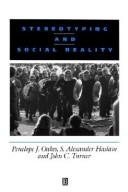
ISBN: 063118872X 0631188711 9780631188728 9780631188711 Year: 1994 Publisher: Oxford : Blackwell,
Abstract | Keywords | Export | Availability | Bookmark
 Loading...
Loading...Choose an application
- Reference Manager
- EndNote
- RefWorks (Direct export to RefWorks)
Social psychology --- Stereotypes (Social psychology) --- Stereotype (Psychology) --- Mass psychology --- Psychology, Social --- Human ecology --- Psychology --- Social groups --- Sociology --- Mental stereotypes --- Stereotyping (Social psychology) --- Attitude (Psychology) --- Rigidity (Psychology) --- Social psychology. --- Sociale psychologie --- sociale cognitie --- Stereotypes (Social psychology). --- sociale cognitie. --- Sociale cognitie. --- Clichés sociaux --- Comportements stéréotypes --- Gedrag [Stereotiep ] --- Gedragingen [Stereotiepe ] --- Idées reçues --- Lieux communs --- Mental stereotype --- Psychologie [Sociale ] --- Psychologie sociale --- Psychology [Social ] --- Stereotiep gedrag --- Stereotiepe gedragingen --- Stereotype (Psychologie) --- Stereotyped behavior --- Stereotypen (Sociale psychologie) --- Stéréotype (Psychologie) --- Stéréotypes --- Stéréotypes (Psychologie sociale)
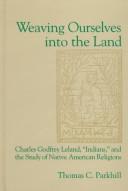
ISBN: 0791434540 0791434532 9780791434536 9780791434543 Year: 1997 Volume: *1 Publisher: Albany State University of New York press
Abstract | Keywords | Export | Availability | Bookmark
 Loading...
Loading...Choose an application
- Reference Manager
- EndNote
- RefWorks (Direct export to RefWorks)
Algonquian mythologie --- Algonquian mythology --- Clichés sociaux --- Comportements stéréotypes --- Gedrag [Stereotiep ] --- Gedragingen [Stereotiepe ] --- Idées reçues --- Lieux communs --- Mental stereotype --- Stereotiep gedrag --- Stereotiepe gedragingen --- Stereotype (Psychologie) --- Stereotype (Psychology) --- Stereotyped behavior --- Stereotypen (Sociale psychologie) --- Stereotypes (Social psychology) --- Stereotyping (Social psychology) --- Stéréotype (Psychologie) --- Stéréotypes --- Stéréotypes (Psychologie sociale) --- Indians of North America --- Algonquian mythology. --- Public opinion --- Religion. --- Public opinion. --- Religion --- Leland, Charles Godfrey --- North America --- Indians of North America - Religion. --- Indians of North America - Public opinion. --- Public opinion - North America.
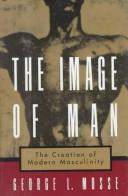
ISBN: 0195101014 0195126602 Year: 1996 Publisher: New York ; Oxford ; Athens Oxford University Press
Abstract | Keywords | Export | Availability | Bookmark
 Loading...
Loading...Choose an application
- Reference Manager
- EndNote
- RefWorks (Direct export to RefWorks)
This book provides a historical account of the masculine stereotype in modern Western culture, tracing the evolution of the idea of manliness to reveal how it came to embody physical beauty, courage, moral restraint, and a strong will.
History of civilization --- Social psychology --- anno 1800-1999 --- Clichés sociaux --- Comportements stéréotypes --- Gedrag [Stereotiep ] --- Gedragingen [Stereotiepe ] --- Idées reçues --- Mannelijkheid (Psychologie) --- Mental stereotype --- Stereotiep gedrag --- Stereotiepe gedragingen --- Stereotype (Psychologie) --- Stereotyped behavior --- Stereotypen (Sociale psychologie) --- Stéréotype (Psychologie) --- Stéréotypes (Psychologie sociale) --- Masculinity --- Men --- Stereotypes (Social psychology) --- Mental stereotypes --- Stereotype (Psychology) --- Stereotyping (Social psychology) --- Attitude (Psychology) --- Rigidity (Psychology) --- Male sexuality --- Masculinity (Psychology) --- Sex (Psychology) --- Psychology --- Sexual behavior --- Masculinity. --- Stereotypes (Social psychology). --- Psychology.
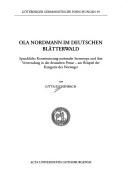
ISBN: 9173463744 9789173463744 Year: 2000 Volume: 39 Publisher: Göteborg Acta universitatis gothoburgensis
Abstract | Keywords | Export | Availability | Bookmark
 Loading...
Loading...Choose an application
- Reference Manager
- EndNote
- RefWorks (Direct export to RefWorks)
Caractéristiques nationales norvégiennes --- Clichés sociaux --- Comportements stéréotypes --- Gedrag [Stereotiep ] --- Gedragingen [Stereotiepe ] --- Idées reçues --- Lieux communs --- Mental stereotype --- National characteristics [Norwegian ] --- Noors volkskarakter --- Norwegian national characteristics --- Stereotiep gedrag --- Stereotiepe gedragingen --- Stereotype (Psychologie) --- Stereotype (Psychologie) in de massamedia --- Stereotype (Psychology) --- Stereotype (Psychology) in mass media --- Stereotyped behavior --- Stereotypen (Sociale psychologie) --- Stereotypes (Social psychology) --- Stereotyping (Social psychology) --- Stéréotype (Psychologie) --- Stéréotype (Psychologie) dans la communication de masse [Moyens de ] --- Stéréotypes --- Stéréotypes (Psychologie sociale) --- Volkskarakter [Noors ] --- Public opinion --- National characteristics, Norwegian. --- Stereotypes (Social psychology) in mass media --- Norwegians --- Foreign public opinion [German ] --- Public opinion - Germany. --- Stereotypes (Social psychology) in mass media - Germany.

ISBN: 0415338034 9780415338035 9780203099216 9781134304493 9781134304530 9781134304547 9780415599337 0415599334 9786610377077 1134304544 1280377070 0203099214 1134304536 1134304498 Year: 2006 Volume: 4 Publisher: London New York Routledge
Abstract | Keywords | Export | Availability | Bookmark
 Loading...
Loading...Choose an application
- Reference Manager
- EndNote
- RefWorks (Direct export to RefWorks)
This book is the first full-length study in English to examine the use of discriminatory language in Japan. As in other countries, there has been much debate about the public use of language deemed demeaning to certain groups within society especially in relation to the issue of minority rights versus freedom of speech. Adding a new dimension to the discussion of language and society in Japan, the book focuses on an aspect of language and power which highlights some of the dissent underlying Japan's officially promoted ideology of a harmonious society. The text presents a revealing e
Clichés sociaux --- Comportements stéréotypes --- Gedrag [Stereotiep ] --- Gedragingen [Stereotiepe ] --- Idées reçues --- Lieux communs --- Mental stereotype --- Stereotiep gedrag --- Stereotiepe gedragingen --- Stereotype (Psychologie) --- Stereotype (Psychology) --- Stereotyped behavior --- Stereotypen (Sociale psychologie) --- Stereotypes (Social psychology) --- Stereotyping (Social psychology) --- Stéréotype (Psychologie) --- Stéréotypes --- Stéréotypes (Psychologie sociale) --- J5090 --- J5009 --- J4207 --- J5020 --- Japan: Language -- minority languages in Japan --- Japan: Language -- theory, methodology and philosophy --- Japan: Sociology and anthropology -- communities -- native ethnicity and race --- Japan: Language -- dialects and variation --- Japanese language --- Social perception --- Mental stereotypes --- Social psychology --- Attitude (Psychology) --- Rigidity (Psychology) --- Cognition, Social --- Interpersonal perception --- Social cognition --- Interpersonal relations --- Perception --- Social cognitive theory --- Social aspects --- Japan --- Social aspects.
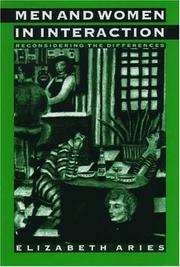
ISBN: 0195103580 9780195103588 1423736702 9781423736707 0195355989 9780195355987 1280452471 9781280452475 9786610452477 6610452474 0195094697 9780195094695 0197736122 Year: 2023 Publisher: New York ; Oxford University Press,
Abstract | Keywords | Export | Availability | Bookmark
 Loading...
Loading...Choose an application
- Reference Manager
- EndNote
- RefWorks (Direct export to RefWorks)
This is a critical review and re-evaluation of the empirical literature on men and women in conversational interaction, in the light of recent debates about gender differences. It contends that gender differences have been greatly exaggerated.
Feminist psychology. --- Interpersonal communication. --- Sex differences (Psychology). --- Stereotypes (Social psychology). --- Sociale psychologie --- sociale interactie. --- Clichés sociaux --- Communication interpersonnelle --- Comportements stéréotypes --- Différences entre sexes (Psychologie) --- Feminist psychology --- Feministische psychologie --- Gedrag [Stereotiep ] --- Gedragingen [Stereotiepe ] --- Idées reçues --- Intermenselijke communicatie --- Interpersonal communication --- Lieux communs --- Mental stereotype --- Psychologie féministe --- Psychology [Feminist ] --- Seksuele verschillen (Psychologie) --- Sex differences (Psychology) --- Sexes [Différences entre les ] (Psychologie) --- Stereotiep gedrag --- Stereotiepe gedragingen --- Stereotype (Psychologie) --- Stereotype (Psychology) --- Stereotyped behavior --- Stereotypen (Sociale psychologie) --- Stereotypes (Social psychology) --- Stereotyping (Social psychology) --- Stéréotype (Psychologie) --- Stéréotypes --- Stéréotypes (Psychologie sociale) --- Psychology --- Mental stereotypes --- Social psychology --- Attitude (Psychology) --- Rigidity (Psychology) --- Sex (Psychology) --- Communication --- Interpersonal relations --- Sociale interactie.
Book
ISBN: 9789052016740 9052016747 Year: 2010 Volume: 1 Publisher: Bruxelles : P.I.E. Peter Lang,
Abstract | Keywords | Export | Availability | Bookmark
 Loading...
Loading...Choose an application
- Reference Manager
- EndNote
- RefWorks (Direct export to RefWorks)
Le rôle fondamental joué dans l’acte de lecture par les divers niveaux de stéréotypie disponibles dans la mémoire collective avait déjà été évoqué maintes fois au cours du XXe siècle, mais l’étude systématique de leur impact dans la compréhension, l’interprétation et l’évaluation des textes littéraires restait à entreprendre. C’est à cette tâche que s’est attelé J.-L. Dufays. Passant en revue les codes de la lecture, les phases de son déroulement et les diverses modalisations dont le sens peut faire l’objet, il montre que tout lecteur se meut dans un jeu de reconnaissance et d’ignorance, de participation et de distanciation à l’égard des stéréotypes du texte, et il suggère que l’exploitation maximale de ces tensions pourrait constituer la forme la plus aboutie de la réception littéraire. La partie majeure de l’étude, qui concerne les modes d’énonciation et les effets de lecture auxquels les stéréotypes se prêtent, montre que c’est toute la logique de l’analyse littéraire et toute l’historicité de la littérature qui se trouvent renouvelées par la prise en compte de cette problématique.Éclairant dans ses synthèses, pointu dans ses analyses, cet ouvrage ambitieux effectue nombre de mises au point dont nulle théorie de la lecture et de la littérature ne peut faire l’économie. Publié pour la première fois en 1994, il fait l’objet d’ici d’une deuxième édition actualisée.
Lecture --- Stéréotypes. --- Interprétation (Philosophie) --- Herméneutique. --- Information, Traitement de l', chez l'homme. --- Psychologie. --- Analyse du discours littéraire --- Clichés sociaux --- Comportements stéréotypes --- Discourse analysis [Literary ] --- Gedrag [Stereotiep ] --- Gedragingen [Stereotiepe ] --- Genèse du texte littéraire --- Genèse textuelle --- Idées reçues --- Interpretatie (Filosofie) --- Interpretation (Philosophy) --- Lecture [Psychologie de la ] --- Lezen [Psychologie van het ] --- Lieux communs --- Mental stereotype --- Reading [Psychology of ] --- Stereotiep gedrag --- Stereotiepe gedragingen --- Stereotype (Psychologie) --- Stereotype (Psychology) --- Stereotyped behavior --- Stereotypen (Sociale psychologie) --- Stereotyping (Social psychology) --- Stéréotype (Psychologie) --- Stéréotypes --- Stéréotypes (Psychologie sociale) --- Tekstgrammatica [Literaire ] --- Reading, Psychology of --- Human information processing --- Stereotypes (Social psychology) --- Perception --- In literature --- Stéréotype (psychologie) --- Analyse du discours littéraire. --- Esthétique de la réception. --- Dans la littérature.
| Listing 1 - 10 of 17 | << page >> |
Sort by
|

 Search
Search Feedback
Feedback About UniCat
About UniCat  Help
Help News
News